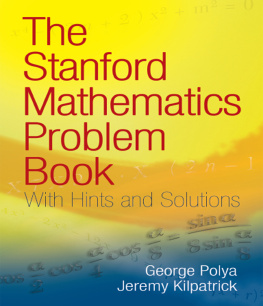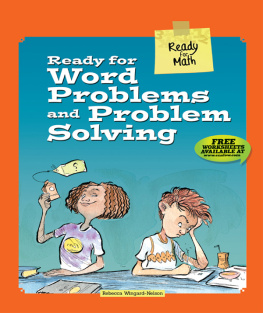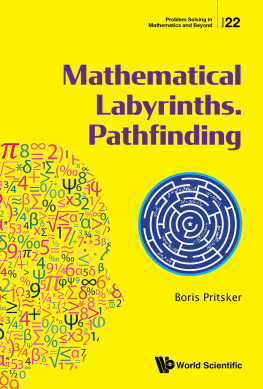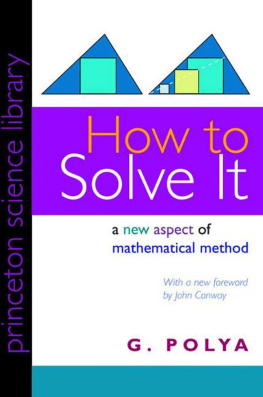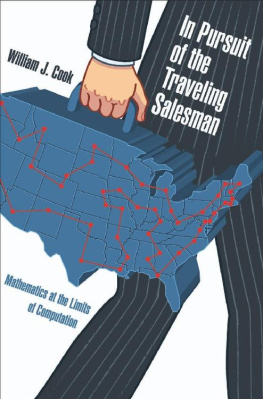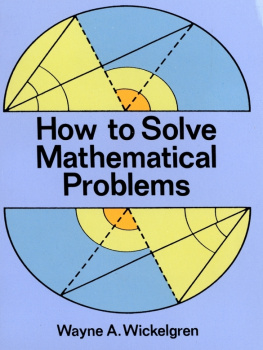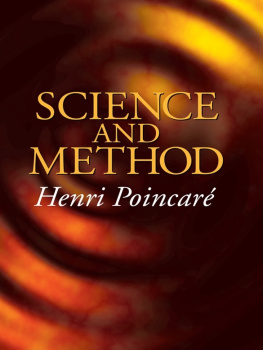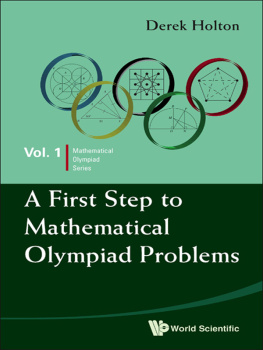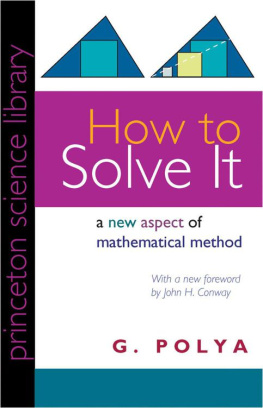G. Polya - How to Solve It: A New Aspect of Mathematical Method
Here you can read online G. Polya - How to Solve It: A New Aspect of Mathematical Method full text of the book (entire story) in english for free. Download pdf and epub, get meaning, cover and reviews about this ebook. year: 2004, publisher: Princeton University Press, genre: Religion. Description of the work, (preface) as well as reviews are available. Best literature library LitArk.com created for fans of good reading and offers a wide selection of genres:
Romance novel
Science fiction
Adventure
Detective
Science
History
Home and family
Prose
Art
Politics
Computer
Non-fiction
Religion
Business
Children
Humor
Choose a favorite category and find really read worthwhile books. Enjoy immersion in the world of imagination, feel the emotions of the characters or learn something new for yourself, make an fascinating discovery.

How to Solve It: A New Aspect of Mathematical Method: summary, description and annotation
We offer to read an annotation, description, summary or preface (depends on what the author of the book "How to Solve It: A New Aspect of Mathematical Method" wrote himself). If you haven't found the necessary information about the book — write in the comments, we will try to find it.
A perennial bestseller by eminent mathematician G. Polya, How to Solve It will show anyone in any field how to think straight.
In lucid and appealing prose, Polya reveals how the mathematical method of demonstrating a proof or finding an unknown can be of help in attacking any problem that can be reasoned out--from building a bridge to winning a game of anagrams. Generations of readers have relished Polyas deft--indeed, brilliant--instructions on stripping away irrelevancies and going straight to the heart of the problem.
In this best-selling classic, George Plya revealed how the mathematical method of demonstrating a proof or finding an unknown can be of help in attacking any problem that can be reasoned out--from building a bridge to winning a game of anagrams. Generations of readers have relished Plyas deft instructions on stripping away irrelevancies and going straight to the heart of a problem. How to Solve It popularized heuristics, the art and science of discovery and invention. It has been in print continuously since 1945 and has been translated into twenty-three different languages.
Plya was one of the most influential mathematicians of the twentieth century. He made important contributions to a great variety of mathematical research: from complex analysis to mathematical physics, number theory, probability, geometry, astronomy, and combinatorics. He was also an extraordinary teacher--he taught until he was ninety--and maintained a strong interest in pedagogical matters throughout his long career. In addition to How to Solve It, he published a two-volume work on the topic of problem solving, Mathematics of Plausible Reasoning, also with Princeton.
Plya is one of the most frequently quoted mathematicians, and the following statements from How to Solve It make clear why: My method to overcome a difficulty is to go around it. Geometry is the science of correct reasoning on incorrect figures. In order to solve this differential equation you look at it till a solution occurs to you.
G. Polya: author's other books
Who wrote How to Solve It: A New Aspect of Mathematical Method? Find out the surname, the name of the author of the book and a list of all author's works by series.

